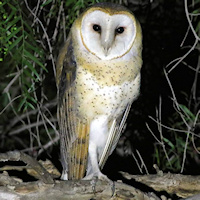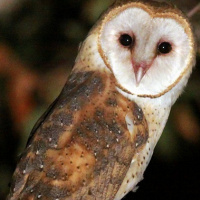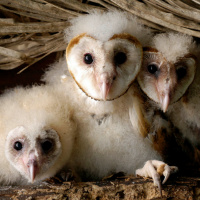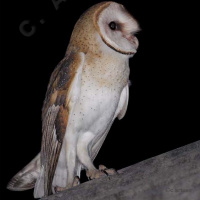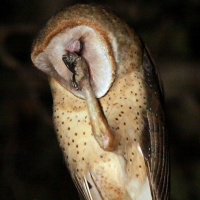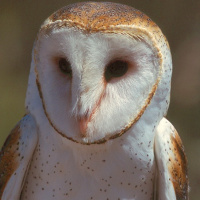Introduction
The American Barn Owl is a medium sized owl with no ear-tufts and a heart-shaped face. It was formerly considered a subspecies of the Common, or Western Barn Owl Tyto alba.
Photo Gallery (6 pictures)
Sound Gallery
Information
Description: The facial disc is whitish, finely rimmed in orange-brown. Eyes are blackish brown and the bill is cream-coloured. Upperparts are generally pale yellowish-brown with fine blackish spots, denser on the crown. Back and wings-coverts have pale greyish areas spotted with triangular shaped whitish dots, shading into blackish at their narrower upper ends. The edge of the wings are orange brown. Secondary flight feathers are mainly whitish, forming a pale area on the closed wing. Primary flight feathers and tail feathers have faintly darker bars, which are sometimes nearly absent on the tail. Underparts are generally whitish with distinct dark spots. Legs are feathered nearly to the base of the toes. Leg feathers are whitish tinged with pale orange. Toes are pale greyish brown with brownish black claws.
Size: Length 34-38cm. Wing length 290-358mm. Tail length 113-152mm. Weight 387-660g. Females often larger and heavier than males.
Habits: Generally nocturnal, although it is not uncommon to see this species emerge at dusk or be active at dawn, occasionally being seen in flight during full daylight. Flight is noiseless, with relatively slow wing beats. Daytime roosts are often in Palm trees.
Voice: A drawn-out rasping screech similar to other Barn Owls.
Hunting & Food: Similar to other Barn Owls, the American Barn Owl feeds mainly on small mammals, especially voles, rats and mice. They will also take bats, birds, frogs, small reptiles and larger insects. They generally hunt from a perch, but may also catch prey in flight.
Breeding: Similar to the Western Barn Owl. Nesting is in tree hollows, caves and abandoned buildings. The average clutch size is 4-8 eggs. Breeding success depends greatly on food supply - when food is scarce, many pairs may not even breed, or may lay smaller clutches.
Habitat: Found in most habitats, even tropical and subtropical forests of South America. Similar to other Barn Owls, high altitudes are avoided.
Distribution: North America south to South America. They were introduced to Hawaii in 1958.
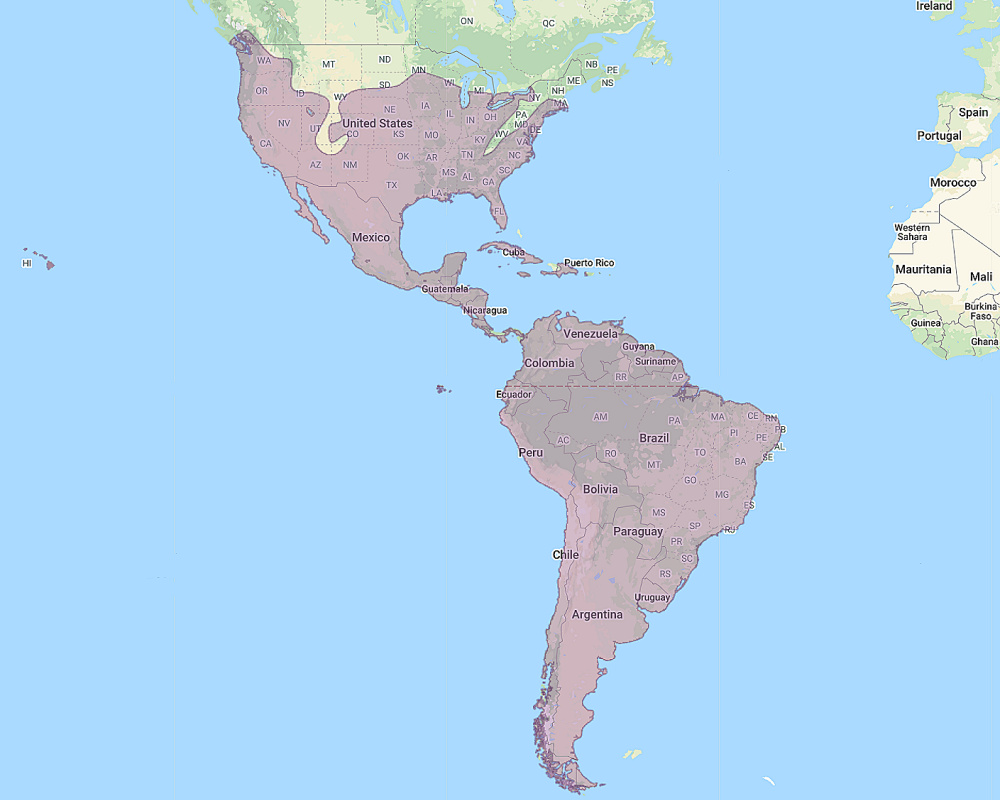
Range of the American Barn Owl Tyto furcata
Status: A widespread species, but generally uncommon to rare throughout its range.
Original Description: Temminck, C.J. 1827. In Temminck & Laugier de Chartrouse, Nouveau recueil de planches coloriées d'oiseaux, livr. 73, pl. 432, and text.

